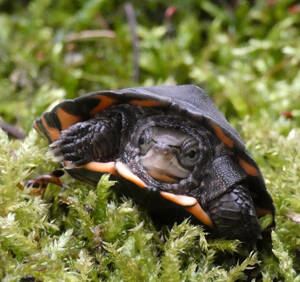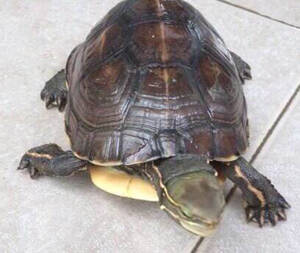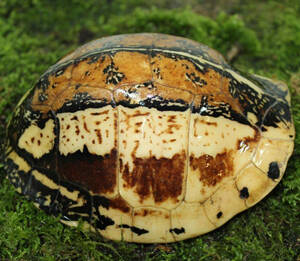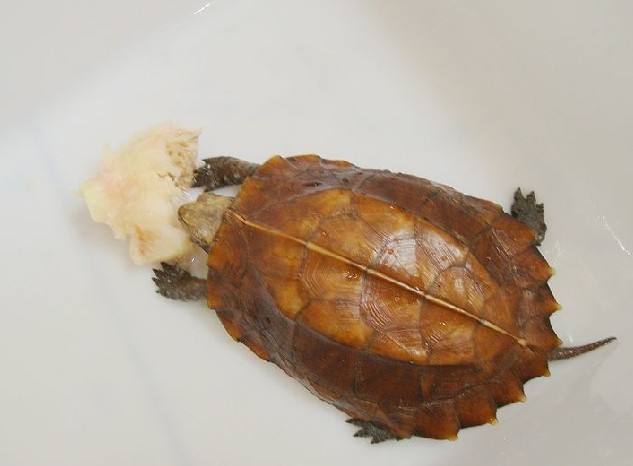Centrochelys sulcata
IUCN
LCBasic Information
Scientific classification
- name:Centrochelys sulcata
- Scientific Name:Sulcata tortoise, Sulcata tortoise, African spurred tortoise, spurred tortoise, hairy-clawed tortoise
- Outline:Testudines
- Family:Testudines Cryptodira Testudinidae Centrochelys
Vital signs
- length:83cm
- Weight:105kg
- lifetime:50-150 year
Feature
The third largest tortoise in the world and the largest tortoise on the African continent.
Distribution and Habitat
Origin: Chad, Egypt, Eritrea, Ethiopia, Mali, Mauritania, Nigeria, Senegal, South Sudan and Sudan.
Uncertain presence and uncertain origin: Niger and Somalia.
The Sulcata tortoise lives in hot, arid areas, from savannahs, desert edges to dry savannahs. Especially in the Sahel region, where there is often no permanent water source. The Sulcata tortoise burrows in the sand, creating underground tunnels that can be 75-90 cm deep and even 3 meters or more long. These burrows and tunnels allow them to retain moisture in arid environments. They spend the hottest part of the day in these habitats. These excavated permanent burrows can be shared by two or more Sulcata tortoises.
Appearance
The male Sulcata tortoise is about 80 cm long, the female is about 50 cm long, the male weighs about 100 kg, and the female weighs about 60 kg. It is the third largest land tortoise in the world and the largest land tortoise on the African continent. It has a broad oval and flat carapace, the carapace is yellow to brown, and the plastron, head and limbs are ivory to brown. The juvenile is reddish brown.
The main features of its appearance are that the dorsal side of the carapace is flattened, the sides suddenly drop, and there is a deep neck notch. There is a notch in the center of the front edge, no neck shield, and the rear edge is serrated and upturned, showing prominent growth rings with age. The plastron is pale and the rear edge is notched more deeply; the limbs are cylindrical with large conical hard ridges; there are 2-3 thick keratin tubercles on both sides of the hind thighs, and the front feet are covered with thick overlapping scales. There are 5 claws on the forelimbs a
Details
The Sulcata tortoise is a tortoise reptile that lives on land. It originally belonged to the family Testudinidae and the genus Testudinidae, so its Chinese name includes the Sulcata tortoise and the Sulcata tortoise. It was finally classified into the genus Centrochelys and is the only surviving species under the genus Centrochelys. Its taxonomic name "sulcata" comes from the physical appearance of its carapace. "Sulcata" comes from the Latin word "sulcus", which means "furrows", referring to the furrows on the tortoise's scales. The species is the third largest tortoise species in the world after the Galapagos tortoise and the Aldabra tortoise. However, it is the largest tortoise on the African continent and not found on islands.
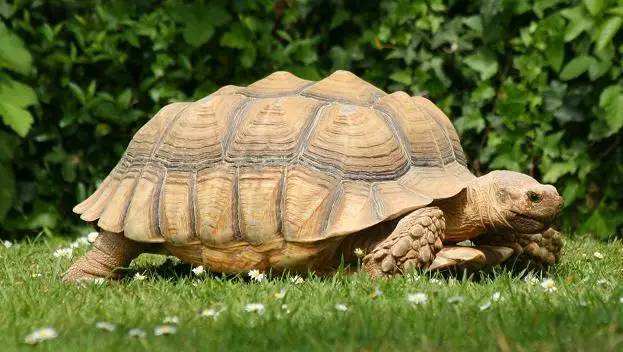
Due to their living environment, they mostly start to move at dusk or early morning to avoid the high temperature of the sun during the day. When the weather is too hot or too cold, they will hide in the cave. When the temperature exceeds 40 degrees, they will secrete a lot of saliva to lower their body temperature. Due to the dry living environment, the Sulcata tortoise has evolved a circulatory system that recycles the water in urine. The water in the urine will be reabsorbed in the tortoise's body, helping them to resist the dry climate. But if the Sulcata tortoise cannot replenish water in time, the uric acid concentration in its body will increase, and with excess calcium, it may cause stones. Therefore, it is very necessary to give the tortoise a bath every once in a while. Bathing can help the tortoise excrete and avoid excessive uric acid remaining in the body, thereby effectively protecting the tortoise's health.
Many populations of Sulcata tortoises are disappearing rapidly, especially in Mali, Chad, Niger and Ethiopia. In Senegal, the number of species in the north and northeast is still limited, but there are also many overgrazing and desertification here, which have caused the Sulcata tortoise to disappear.
Habitat loss is one of the main reasons for the decline, which also includes urbanization, desertification and overgrazing by livestock. Several ethnic groups living in the Sahel region, especially nomadic tribes, use the species as food. It is reportedly used as a longevity potion in Japan. They are also captured and kept as pets in Europe and North America. The captures are mainly young Sulcata tortoises, because they take 15 years to mature, and there are concerns that the wild population may not be able to renew itself, which means that the local population will become extinct.
Listed in the "World Conservation Union Red List of Endangered Species" (IUCN) 1996 ver3.1-Vulnerable (VU).
Listed in the "Washington Convention" CITES Appendix II protected animals.
Listed in the "Red List of Endangered Species of the World Conservation Union" (IUCN) 2020 ver3.1-endangered (EN).
Listed in Appendix I, Appendix II and Appendix III of the Convention on International Trade in Endangered Species of Wild Fauna and Flora (CITES) 2019 edition Appendix II.
Protect wild animals and eliminate game.
Maintaining ecological balance is everyone's responsibility!
FAQ
What is a Sulcata tortoise?
The Sulcata tortoise (scientific name: Centrochelys sulcata), also known as the African spurred tortoise, is the third-largest tortoise in the world, after the Galápagos and Aldabra giant tortoises. It is native to the grasslands on the edges of the Sahara Desert.How large do Sulcata tortoises grow?
Adult Sulcata tortoises can reach a length of 60-80 cm (24-32 inches) and weigh over 45 kg (100 lbs), with some individuals growing up to 90 kg (200 lbs) or more.What is the temperament of Sulcata tortoises?
Sulcata tortoises are generally gentle and friendly. However, due to their large size and strong legs, they can be quite active and may push over obstacles as they explore their surroundings.What do Sulcata tortoises eat?
They are herbivorous and require a diet rich in fiber and low in sugar. Their diet should consist of grasses, cactus pads, and leafy greens like dandelions. Avoid feeding too much fruit, as it can cause digestive issues.What should be considered when housing a Sulcata tortoise?
Sulcata tortoises need plenty of sunlight or UVB lighting to aid calcium absorption and prevent metabolic bone disease. They require a warm and dry habitat, as cold temperatures can lead to respiratory infections.



